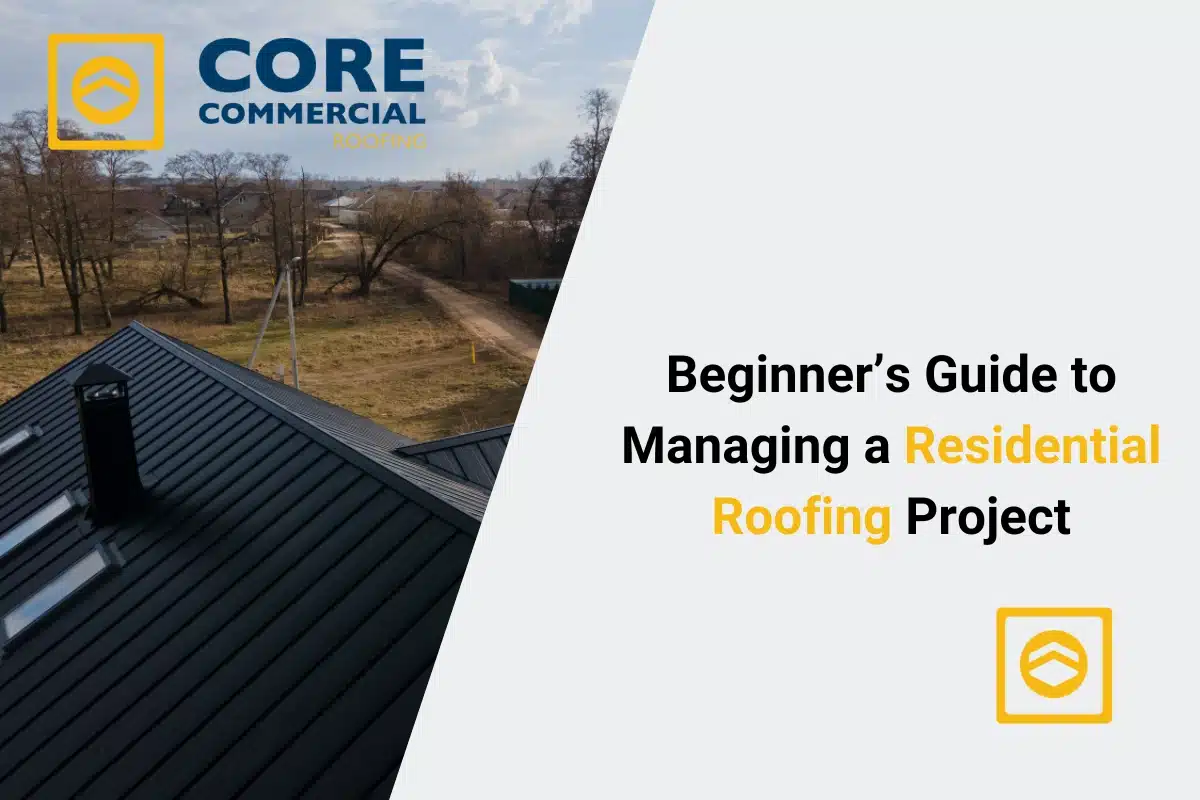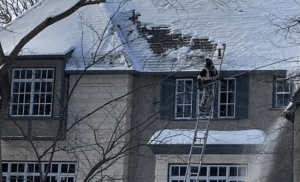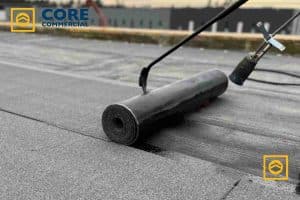Taking on a new roofing project for your home can feel overwhelming at first. Between choosing materials, hiring the right contractor, and making sure everything stays on schedule, there’s a lot to keep track of. The most reliable ways to reduce stress during this process are by staying organized and focusing on step-by-step planning. Our favorite approach is starting with a detailed roof inspection because it helps you spot problems early, understand the condition of your roof, and build a clear plan before any major work begins. If you take time to prepare, you’ll not only save money but also protect your home from unexpected issues down the road. This article will walk you through every stage of managing a residential roofing project, showing you practical tips that can turn a stressful job into a smooth experience.
Table of Contents
Why Managing a Roofing Project Matters
Your roof is the first line of defense against rain, heat, wind, and even snow. When it’s in poor condition, your entire home is at risk for leaks, mold, or structural damage. Managing a residential roofing project properly ensures that the work is done the first time, avoiding expensive mistakes. Homeowners who plan often experience fewer delays, less confusion with contractors, and more predictable results. In other words, careful management keeps your project on time, on budget, and stress-free.
Step One: Start With a Thorough Roof Inspection
Before making any big decisions, schedule a roof inspection. This step provides the foundation for your entire project. A qualified professional can check for leaks, damaged shingles, or weak spots that might not be visible from the ground. Many people search online for “roof inspection cost in Lubbock, TX” or similar queries because pricing varies based on location and roof size. While cost matters, what’s more important is gaining a clear understanding of your roof’s condition. Once you know the state of your roof, you can decide if you need a full replacement, minor repairs, or preventative maintenance.
Choosing the Right Roofing Material
After inspection, the next step is selecting materials. Shingles, tiles, and metal are the most common residential roofing options. Many homeowners are turning to metal roof installation because of its durability and energy efficiency. Metal roofs reflect sunlight, reduce cooling bills, and last decades longer than traditional shingles. On the other hand, asphalt shingles remain popular due to their affordability and wide variety of styles. When comparing materials, think about lifespan, maintenance requirements, and how they fit into your home’s style. Managing a residential roofing project means balancing budget with long-term value, so take time to weigh the benefits before making your choice.
Finding and Hiring the Right Contractor
Even the best roofing material won’t perform well without proper installation. Hiring a skilled, trustworthy contractor is one of the most important steps in your project. Start by reading reviews, asking for references, and verifying licenses. Many homeowners make the mistake of choosing solely based on price, but the cheapest option often leads to poor workmanship and future repair costs. Instead, look for a contractor who communicates clearly, offers a detailed written estimate, and explains their process. Clear communication ensures you’ll know what’s happening at each stage of your roofing project.
Planning the Project Timeline
Managing a residential roofing project involves more than simply setting a start date. Weather, material delivery, and contractor availability all play a role in how quickly work can be finished. A good contractor will provide a realistic timeline, usually outlining preparation, installation, and cleanup phases. Unexpected delays happen, especially if weather conditions change suddenly, but clear scheduling keeps everyone on track. By knowing what to expect, you can prepare your household for noise, debris, and temporary disruptions while the project is underway.

Setting a Realistic Budget
Budgeting goes beyond material costs. Homeowners should factor in labor, cleanup, permits, and unexpected repairs. For example, once your old roof is removed, hidden damage to the decking or structure might appear. Having a cushion in your budget protects you from stress if extra costs arise. To stay organized, request detailed written estimates that break down each part of the job. This makes it easier to compare contractors and prevents surprises. Remember that investing in quality materials and proper installation now reduces the chance of expensive repairs later.
Preparing Your Home and Family
Roofing projects can be disruptive, but preparation minimizes the impact. Clear your driveway for material deliveries and keep pets and children safely away from work areas. Move vehicles, outdoor furniture, and fragile items away from the home to prevent damage. Inside the house, cover belongings in the attic, as debris and dust may fall through during installation. These small steps make a big difference in keeping your family safe and your property protected throughout the project.
The Installation Phase
During installation, contractors will remove the old roof, repair underlying structures, and install new materials. This stage can last anywhere from a few days to over a week, depending on roof size and weather. It’s important to maintain communication with your contractor. Ask for daily updates on progress and make sure any changes are documented in writing. By staying involved, you ensure that the work matches your expectations.
Quality Checks and Final Walkthrough
Once the installation is complete, don’t sign off immediately. Conduct a final walkthrough with your contractor. Check that all shingles or panels are securely installed, flashing is sealed properly, and gutters are clear of debris. A professional contractor should also provide warranty details for both materials and labor. This final step confirms that your roof is ready to protect your home for years to come.
Long-Term Maintenance After the Project
Managing a residential roofing project doesn’t end with installation. To extend the life of your roof, schedule regular maintenance. Inspect it at least twice a year, especially after heavy storms. Clean gutters, remove debris, and look for small issues like cracked shingles or loose flashing before they turn into bigger problems. Businesses use commercial roof maintenance plans to protect their investments, and homeowners can take a similar approach by staying proactive with care. A little upkeep today prevents costly repairs tomorrow.
Comparing Residential and Commercial Roofing Needs
While residential roofing focuses on protecting families and personal property, commercial buildings often have larger, more complex systems. Repairs to commercial roofing may involve flat roof materials, drainage issues, or energy efficiency upgrades. Homeowners can learn from commercial strategies, such as scheduling preventative inspections and using durable materials like metal or tile. By borrowing best practices from the commercial sector, residential property owners can ensure stronger long-term protection for their homes.
Common Mistakes to Avoid
Many homeowners rush through decisions or skip important steps when managing a roofing project. Some of the most common mistakes include:
- Choosing the cheapest contractor without checking credentials
- Failing to budget for hidden repairs
- Ignoring regular maintenance after installation
- Not reviewing warranty details
Avoiding these pitfalls will keep your roofing project on track and protect your investment.
Final Thoughts
Managing a residential roofing project takes planning, patience, and attention to detail. When you begin with a thorough inspection, choose durable materials, hire skilled professionals, and maintain the roof over time, you build a system that protects your home for decades. The process can feel overwhelming, but breaking it down step by step makes everything more manageable. With the right preparation and smart decisions, you gain the peace of mind that comes from having a safe, long-lasting roof over your head.
And if you want the job done smoothly and reliably, our roofing service is always here to help. Check more about us, offering expert guidance and quality workmanship every step of the way
FAQs
How do I know if my roof needs to be replaced or just repaired?
You’ll usually notice signs like missing shingles, frequent leaks, or sagging areas when a roof needs major work. A professional roof inspection can confirm whether small repairs will fix the problem or if a full replacement is the smarter option.
What should I check before hiring a roofing contractor?
Look for licenses, insurance, and customer reviews. A reliable contractor will provide a written estimate, explain the process clearly, and answer your questions directly. Avoid choosing based only on the lowest price.
How long does a residential roofing project usually take?
Most roof replacements take between 2–7 days, depending on the size of the roof, type of material, and weather conditions. Repairs are often quicker and can sometimes be finished in just a day.
How much should I budget for unexpected roofing costs?
It’s smart to set aside at least 10–15% of your budget for surprises. Once old roofing is removed, hidden damage such as rotting wood or weak decking might be found. Having a cushion prevents stress.
What is the best type of roof for long-lasting protection?
Metal roofing is often chosen for its durability and energy efficiency, lasting 40–70 years. Asphalt shingles are more affordable but may need replacement after 20–30 years. The best choice depends on your budget and how long you plan to stay in your home.
Can I stay in my home during a roof replacement?
Yes, most people stay at home during the project, but it will be noisy and messy. Keep children and pets safe indoors or away from work areas. If you’re sensitive to noise, you may want to be away during the daytime.
How do I prepare my home before roof work starts?
Move vehicles from the driveway, cover attic items, and clear the yard of furniture or decorations. This protects your belongings and gives workers safe access to your roof.
What are the signs of a bad roofing job?
Warning signs include uneven shingle lines, exposed nails, poor ventilation, and leaks shortly after installation. A proper final walkthrough with the contractor helps catch problems early.
How often should I schedule roof maintenance?
At least twice a year is recommended, usually in spring and fall. After storms, check for loose shingles, clogged gutters, or damaged flashing. Regular maintenance can add years to your roof’s life.
What’s the difference between residential and commercial roofing?
Residential roofs are usually pitched and use shingles, tiles, or metal panels. Commercial roofing often involves flat surfaces and materials like TPO or modified bitumen. However, both require regular inspections and timely repairs to last.






